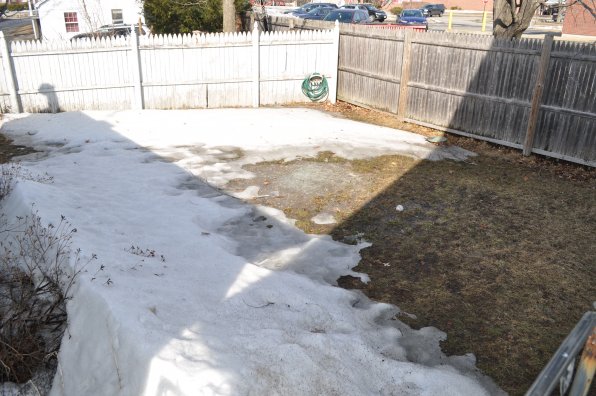While it may not seem like it now, under all that snow outside your house is your yard. Just trust us.
And soon, if the temperatures continue to rise, you’ll be able to see what we’re talking about. But unfortunately, what’s underneath that fading sign of a winter we all would like to forget is not the lush green grass you fondly remember.
The winter, especially like the mega one we just had, can do some serious damage to the grass and its roots, and now is the time to start mentally preparing for all the work to come, even if you can’t actually do it. Because let’s face it, probably only a limited number of you reading this can actually see large areas of grass, and even fewer of you have a yard anywhere close to being dry enough to walk on.
But once the snow clears and the muddy, wet areas dry up, that’s when it’s time to get to work.
“Essentially you’ve got to hustle and get on top of it,” said Chris Wible, owner of CRW Landscaping. “You can get as indepth as you want. It’s all how good you want your yard to look.”
First order of business is to get rid of any lingering debris from the fall. It may have seemed like a good idea to skip the whole leaf raking part of the fall cleanup in hopes it would somehow just get pushed down into the soil by the weight of the snow, but we both know that was never going to happen. And now you get to rake all those leaves, just in a more saturated form.
“You’ve got to let everything dry out and pick up the big stuff,” said Kevin Clough, owner of K. Clough’s Landscaping and Design. “It’s going to take a while. I have a foot of snow in my backyard.”
Winter storms and wind can bring down branches, which is fine if you have a fence to just toss them over and forget about – unless that fence abuts a neighbor and they toss them back. In that case, you might have a little lawn cleanup battle on your hands, and if so, we want to hear about it.
“If you can walk on your lawn and clean it up, you can start the process,” Clough said.
Once you get everything cleaned up, it’s time to focus on that brown and beyond-repair-looking grass. Don’t worry though, even the nicest of New Hampshire lawns look bleak at the end of winter, and while it may look dead, that’s not the case – at least from what we’ve been told.
So bust out your rake and start removing all the snow mold and winter kill, which is the grass that didn’t survive the winter. But, like we said before, it’s salvageable – you just need to be able to get to the soil and roots. Although we should probably wait until we can actually see all of the grass, which has caused a slower start than normal.
“We usually really get going by April 1, but we’ll be a week later,” Wible said.
By the middle to the end of May, we guarantee all signs of winter and wet, mucky areas will be long gone. And once you’ve got the cleanup done, you can start moving on to the seeding and fertilization stage.
And before you know it, you’ll have your luscious lawn back, ready to mow (which Wible said 3.5 inches is about the perfect height) and enjoy until the leaves start falling again.
“Green grass makes everyone happier,” Clough said.









